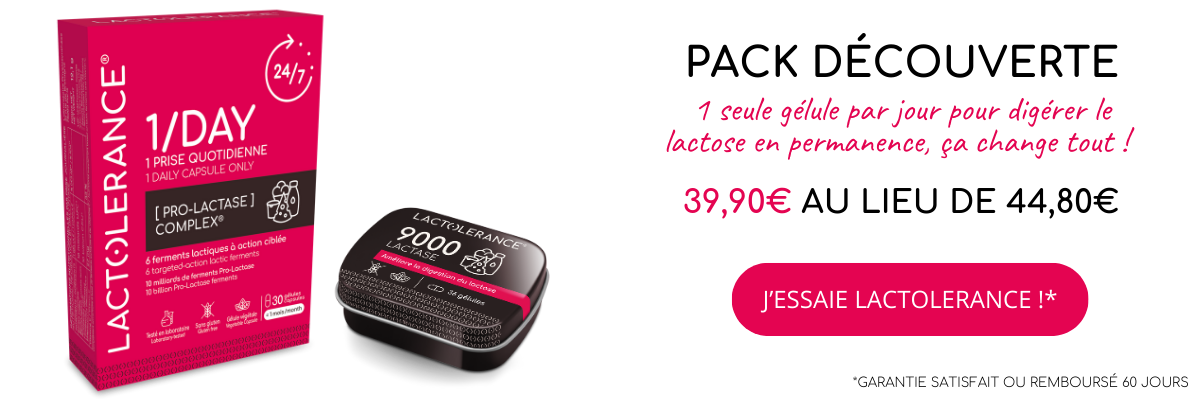
Living with food intolerance is a real headache on a daily basis! 😤
It means scrutinising food labels or asking about the composition of dishes likely to cause symptoms of varying degrees of disability. It also means having to develop tricks to manage your diet on a daily basis and inventing stratagems to manage your social life.
👇Lactolerance gives you the tools you need to live better with lactose intolerance without disrupting your family, social and professional life. 👇
Tip no. 1: read processed food labels to spot hidden lactose 🔍
Lactose is right where it should be, in dairy products, but it's also there where you least expect it, as in the charcuterie and medicines. So it's vital for people with lactose intolerance to be able to decipher the labels on industrial products.
Lactose is listed as "milk" in the list of allergens. The law now requires manufacturers to indicate in bold the allergens present in their food. Restaurant owners and food retailers are also required to keep a written list of the 14 allergenic substances potentially present in their dishes and other foodstuffs.
On the other hand, lactose is indicated in various forms in the list of ingredients:
- milk
- whey
- milk powder
- butter
- whey
- lactulose
- cream
- lactalbumin
- lactoglobulin
⛔ Milk powder is undoubtedly the worst enemy of lactose intolerant peopleIt contains around 50% of lactose, but you should also be wary of a large number of sweet and savoury processed foods.
Tip no. 2: alternative foods to indulge despite everything! 🍃🥜
Lactose intolerance is by definition restrictive, in that it requires you to monitor your diet carefully. Fortunately, the modern agri-food industry is becoming more inclusive by taking greater account of the diversity of diets - lactose-free, gluten-free, vegetarian, vegan, halal, kosher, etc.
As a result, more and more foods labelled lactose-free are appearing alongside traditional dairy products on supermarket shelves. These include products made from soya, oats, coconut or almonds are the perfect replacement for cow's milk, crème fraîche, yoghurts, etc.
Last but not least, opt for homemade food to manage your diet in a way that's both healthy and delicious. With a yoghurt maker, for example, you can make plain or flavoured yoghurts that are perfectly digestible by the body, even for people who are lactose intolerant. Click here to discover all our homemade lactose-free recipes 🍽️

Tip no. 3: Lactase supplementation 💊🛡️
Lactose intolerance is not a disease but a natural phenomenon and there is no curative treatment for those who are intolerant. Lactase supplementation is currently the most effective treatment. the best method to combat symptoms on a daily basis and gain digestive peace of mind. 💪
In capsule form, oral lactase supplementation compensates for your body's lack of the enzyme needed to digest lactose, and reduces or even eliminates the undesirable effects of intolerance.
When you eat out, particularly in restaurants or with friends, you can choose lactase supplementation to enjoy your meals to the full without fear of the unpleasant consequences associated with lactose (bloating, diarrhoea, pain, etc.).
Take one capsule just before consuming a food containing lactose to help digestion. Lactolerance food supplements 4500, 9000 and 1Day make everyday life easier for people with moderate to severe lactose intolerance.
👇What if you opted for permanent digestive tranquillity? 👇

Hello, I'm Vincent
Like you, I'm lactose intolerantI know exactly what you're going through and the difficulties you encounter on a daily basis. For over 10 years, I've been helping our customers to use our dietary supplements and giving advice and tips on how to improve their digestive comfort. I'm also a keen cook and gourmet, so you'll find my favourite recipes for a lactose-free diet in this blog.
Lactose intolerance is not inevitable! With LACTOLERANCE you can digest with complete peace of mind






